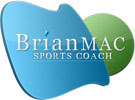

Conditioning
Program of Medicine Ball Exercises
Rob Thickpenny provides an overview of a medicine ball strength and conditioning exercises program for all track and field event groups in the general and specific training phases.
The medicine ball should weigh between 2 and 8 kg, depending on the athlete's training age and developmental age. Coaches should ensure that the athlete has no pre-existing injuries before using this form of training and that a correct movement pattern (technique) exists before increasing the load.
Dynamic warm-up
The following exercises can be completed with a light medicine ball in the hands (1-3kg) or just with body weight until the athlete has a competent movement pattern.
- Squats x 12.
- Lateral lunge x 6 left & 6 right.
- Sumo squat to overhead press x 12.
- Lunge x 6 left & 6 right.
- Walking single-leg Romanian Deadlift (stiff leg) over 15m.
- Sumo squat with 180 degrees rotation over 15m.
- Press-ups x 12.
- Kneeling lawnmower pulls x 8 left & 8 right.
- Supine leg lifts (free leg bent) x 10 left & 10 right.
- Supine crucifix (Iron Cross) – opposite foot to hand x 8 left & 8 right.
- Standing leg swings – side to side x 8 left & 8 right.
The following exercises should be completed after a thorough dynamic warm-up or a drill/technical session. For training parameters, see the guidelines in Table 1 below.
- Seated backward throw.
- Chest pass (perform the exercise standing on one leg to improve balance and coordination).
- 3-touch Russian twist to side-throw (increase the intensity by elevating feet).
- An overhead throw from the kneeling position (kneeling lunge).
- Side throws (against a wall or with a partner).
- Underhand throw (forward throw).
- An overhead throw from the standing position – single-leg balance.
- Standing backwards, throw for distance.
- Vertical toss for height.
- Superman toss.
- Plyometric sit-up with an overhead throw or chest pass (increase the intensity by lying supine on a Medicine ball or foam roller – positioned at the mid-back).
Advanced Exercises
- Power drop (coach releasing the ball from a 12 to the 42-inch box).
- Medicine ball shoulder press throw (increase intensity by performing a vertical jump on release).
- A supine medicine ball kicks for a distance.
- Two-handed Neider throw followed by a 15-metre sprint forwards or backwards.
- Jump squats to medicine ball chest pass.
- Overhead slam to vertical jump.
- V-sits with a medicine ball.
- Backwards throw with a jump to a box and stabilise in a quarter squat position (box 12 to 42 inches high).
- Medicine ball walkover press-up (explosive).
Complex Training
A more advanced training method would be to perform explosive medicine ball exercises after a weightlifting exercise, i.e., Cleans or Back Squats, followed by a medicine ball vertical toss. This method of training is more commonly known as complex training. As a guideline, this type of training should only be employed with athletes with at least five years of experience in performance lifting, other compound lifts, and competent movement patterns.
Table 1 - Training parameters for a method
Bompa et al. (2005)[1] suggests the following loadings:
| Training parameters | Work |
| Load | Standard |
| Number of exercises | 3 - 6 |
| Number of repetitions per set | 10 - 20 |
| Number of sets per session | 3 - 5 |
| Number of sessions per week | 2 - 4 |
| Rest Interval | 1 - 3 minutes |
| Speed of execution | Explosive |
References
- BOMPA, T. et al. (2005) Periodisation Training for Sports. 2nd ed. USA: Human Kinetics
Page Reference
If you quote information from this page in your work, then the reference for this page is:
- THICKPENNY, R. (2009) Program of Medicine Ball Exercises [WWW] Available from: https://www.brianmac.co.uk/articles/article056.htm [Accessed
About the Author
Rob Thickpenny is a level 3 Performance Coach in Jumps with an honours degree in Sports Science from Brunel University. He was an elite-level Pole Vaulter for 12 years. Rob has considerable experience as a Strength and Conditioning Coach in Athletics, Professional Squash, Rugby Union, and Hockey. He has been involved in coach education for three years as a tutor for British Athletics. Currently, he works for England Athletics, responsible for coach support and development in Essex.